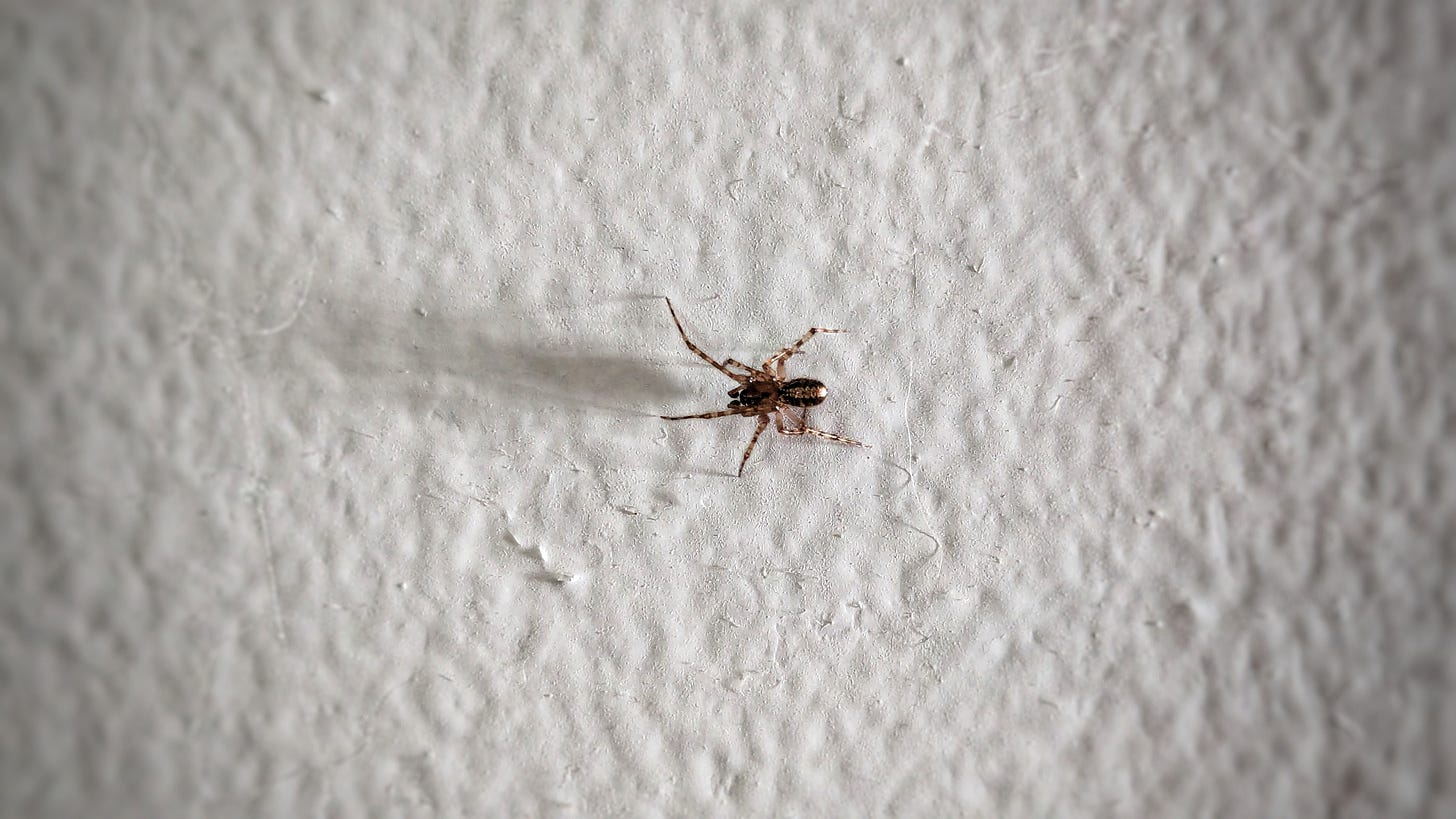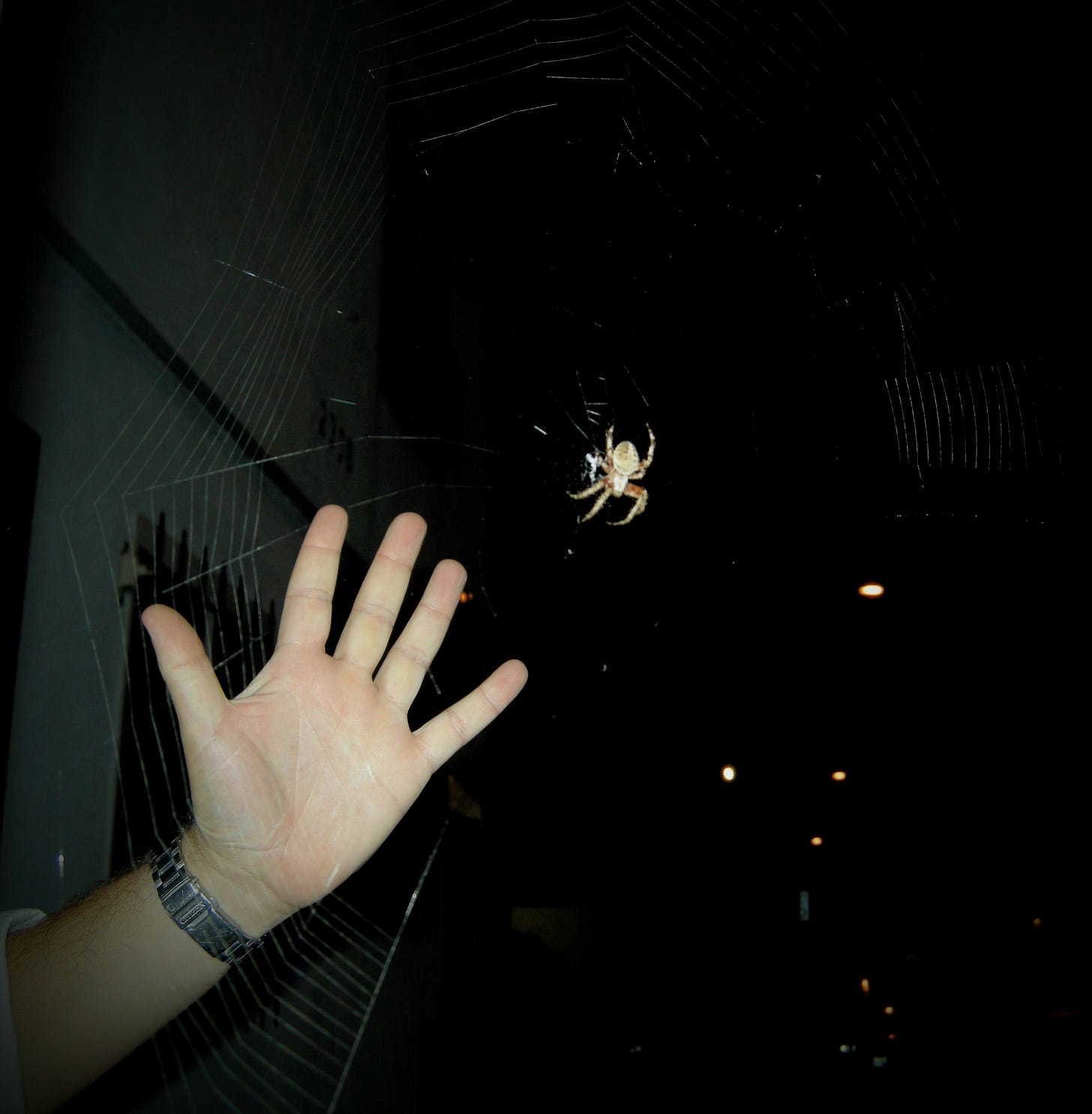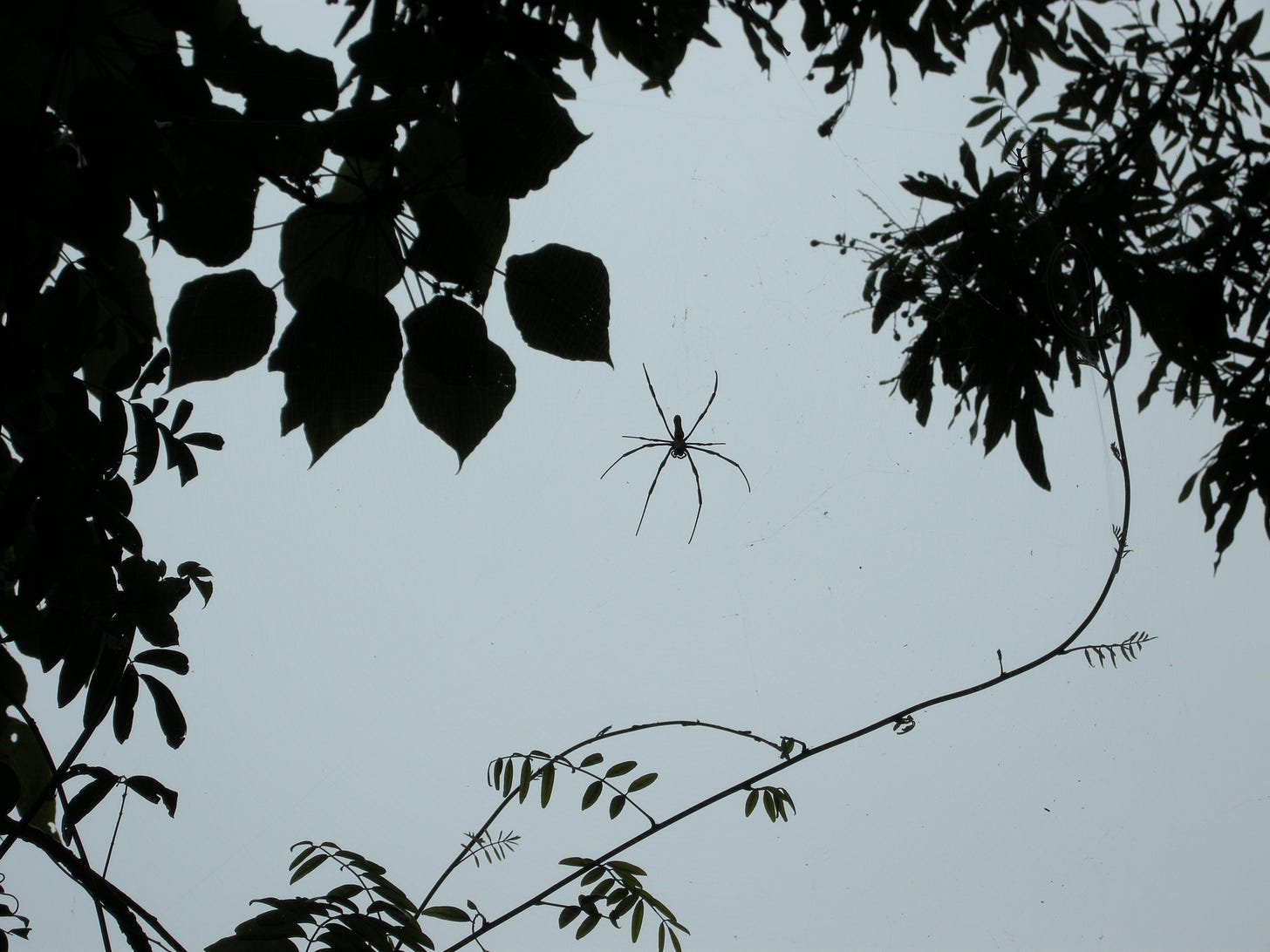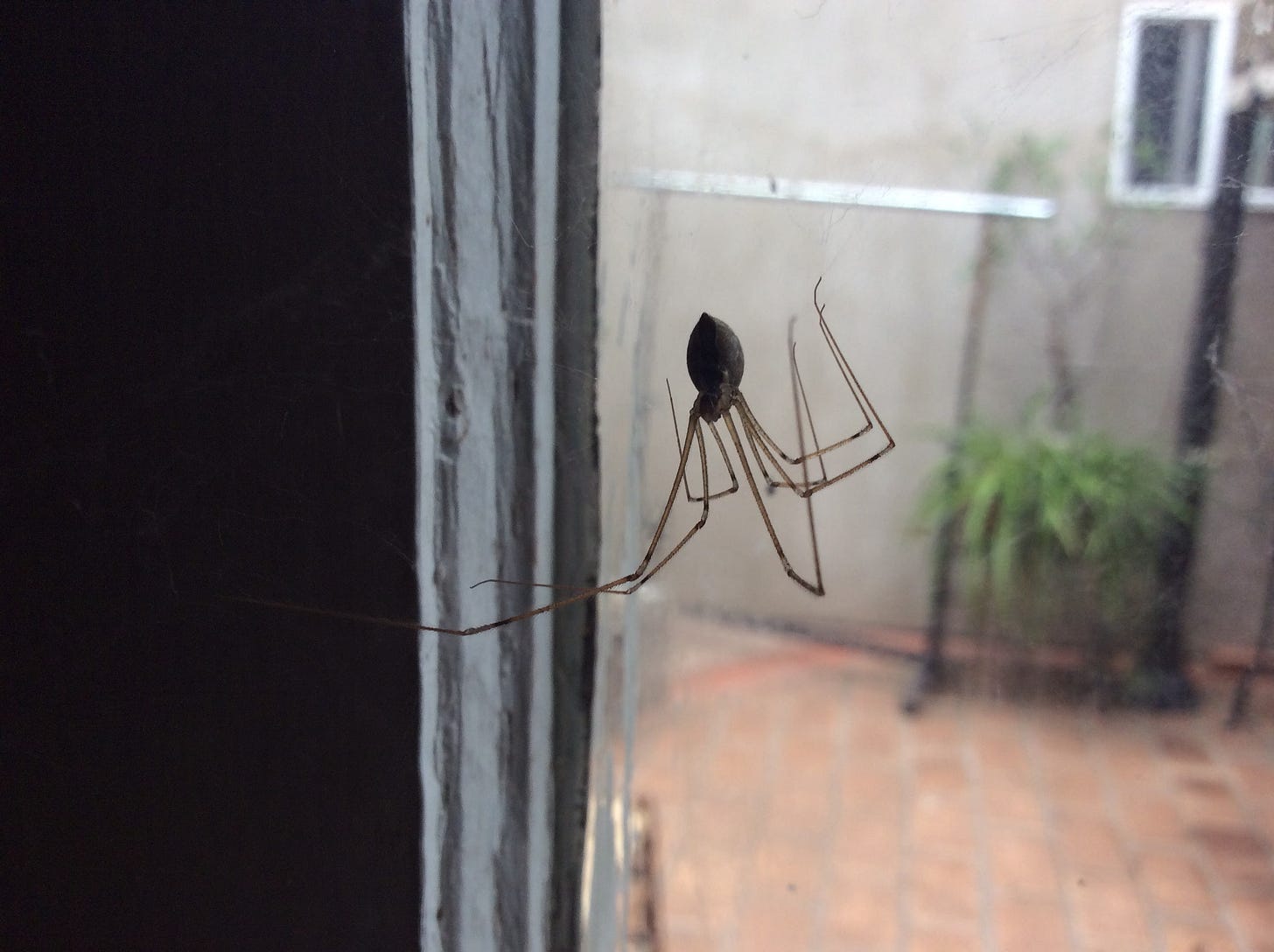Spider, Spider, Squirming Fright?
Spiders are having a pop culture moment. Are they the monsters two recent B-movies want them to be?

There are two broad types of movie monsters: supernatural and natural. They include fantastical beings, demon and alien, able to command dark forces for Evil and defy the laws of physics: Nyarlathotep, Gashadokuro, Pazuzu, Dracula, Pennywise. Then there are variations on the real creatures that walk (and crawl and fly and swim) among us: man-eating sharks, drug-crazed bears, ravenous rats, opportunistic alligators and toxic slugs.
Spiders hit that visceral sweet spot so important for naturally occurring movie monsters. It doesn’t take much to turn them into all-too convincing screen fiends: enlarge them, move them from a remote jungle or desert into the city, give their venom an added kick, and let the screaming begin.
Around 6% of humans report a hardwired deep down phobia of eight-legged beasts. Unlike other ingrained fears, arachnophobia can’t always be traced back to childhood trauma. These humans are born afraid, genetically programmed to See spider, run! The remaining 94% of us experience varying degrees of fear and fascination.

Arachnids trigger our primal senses because we have history. Spiders have been around for 380 million years and evolved into apex predators long before humans made an appearance, six or so million years ago. When the first humans took shelter in caves, spiders already lurked inside, tracking the intruders with their various pairs of eyes. All spiders are venomous, some more than others, so those initial encounters must have been painful for us. But the spiders liked what they saw, and followed us into our first constructed dwellings in the Paleolithic era, cobwebbing our rafters and vaults. They’ve stalked us ever since.
That stalking is deeply problematic. Phobics report that they’re most triggered by the way a spider moves–there’s definitely something unnerving about arachnid mechanics. They propel their cephalothorax (the fused head and thorax) on long, spindly six-jointed legs. Their feet are covered in tiny hairs that give them the grip required (via Van der Waals forces) to skitter up and down vertical surfaces carrying up to 173 times their own weight.
Those tiny hairs (trichobothria) also sense sound and air movements and connect spiders to the vast electrical fields constantly pulsing above our heads. Humans only think about this electricity when they see lightning, but spiders stay alert to the energetic flow. If they extend a negatively charged strand of silk, the positively charged electrical field pulls it upwards, lifting the spider up to two miles in the air. Spiders use these force fields to surf thousands of miles across land or out to sea, a technique called ballooning. It’s so successful that spiders live everywhere on earth except Antarctica, which is inhospitable to arachnids as it’s a) too cold and b) only has one native insect, the tiny Antarctic midge.
Tiny midges are nowhere near enough to sate spidiferous appetites. Every year, spiders eat more insects, by weight (a lowball estimate is 400 million metric tons), than there are humans on this planet (smushed together we weigh 390 million metric tons). Think about it. Spiders grab their prey with serrated fangs that inject a form of venom that both paralyzes the victim and begins the flesh-liquefaction process. All the better to suck you into a spider-stomach, my dear.
Don’t peek, but there’s a spider slurping down its breakfast a few feet from where you’re sitting right now. A 2017 survey (‘Arthropods of the Great Indoors’) counted spiders in 100% of houses tested and estimated we’re sharing our homes with, on average 61 spiders at any given time. Indeed, several species have evolved to live purely in our dry, warm, fly-and-mite-infested indoor spaces. Cellar, wall, and house spiders don’t live outside. Myriad other species nest in our woodpiles and under our decking. Most of them are so small they remain all but invisible, silently living out their life cycles behind crown molding, between floor boards, or in the corners of a broom-inaccessible skylight.
Though they are tiny, they are fierce––and smart. Spiders are sophisticated hunters, able to plan ahead and adapt their tactics based on previous experiences. They change the structure of webs depending on what they want to ensnare. They even change their appearance––various spiders have evolved to look like ants so a) they can eat ants or b) they aren’t eaten by ants. On the whole, we benefit from their tireless pest control as they consume annoying roaches, flies, earwigs, clothes moths, and the No.1 killer of humans, mosquitoes. Recent research even suggests that after all that hard work on our behalf, they sleep and dream. If they process what they have witnessed during the day, these dreams must be cinematic masterpieces: jumping spiders have eight eyes, with varying focal lengths, and see in color.
Luckily for us, spiders remain relatively small, unable to scale up their exoskeletons within the constraints of Earth’s gravity and atmosphere. The largest spider on the planet is currently the Goliath Birdeater (Theraphosa blondi), with a leg span measuring up to a foot across. Despite the name, they feed mainly on rodents, amphibians, insects and worms, dragging their prey back to their nests for that whole liquify/guzzle process. If threatened by humans, they have the ability to shoot urticating hairs in our direction. These hairs, at minimum, cause a nasty rash that can last for days. What else? The females live (and learn) for up to 25 years.
Clearly, if it wasn’t for their size, spiders would rule the world.
What would it take for them to become our overlords? More so than, say, cockroaches (which are NASTY), spiders live rent-free in the zeitgeist. They’re a cultural preoccupation. Collectively, and over time, we obsess over the ‘What if…?’ of suddenly enlarged arachnids. There’s a whole subgenre of mutated spider movies out there that explore a [INSERT MONSTER SPIDER] scenario as a way of commenting on anxieties of the day. In the 1950s, B-movie schlock classics like TARANTULA (1955), or EARTH vs THE SPIDERS (1958) (aka THE SPIDERS) superimpose an atomically enlarged yet slow moving hairy tarantula over scenes of intergenerational miscommunication leading to urban chaos. Did the giant spider initiate societal breakdown or did it just happen to be there that day? More recently, this decade, there has been a mini-spate of Chinese movies about monster spiders (JU ZHU (2021), CRAZY SPIDER (2021), ABYSSAL SPIDER (2020)) that may or may not have been propagated in a lab before being unleashed on an unsuspecting and vulnerable population.
That brings us to STING (2024) and INFESTED (2024), both released in the USA last month. It’s unusual and instructive to see two movies with exactly the same plot (deadly spiders colonize apartment buildings, tenants fight back) drop into the cultural mix at the same time.
The STING spider is a literal alien, riding a tiny spaceball of fire into a Brooklyn apartment building, where it lucks out by making first contact with an arachnophile, tween Charlotte (Ayla Brown). Charlotte weaves her superhero dreams by drawing a comic strip about a girl and her giant, powerful spider and welcomes the newcomer into her private world (“I’m gonna call you Sting”). She nurtures her rapidly-growing new pet in a jar, hiding it from her mother and stepfather, until Sting escapes and starts harvesting the neighbors’ pets, and then the neighbors themselves.
Richard Taylor, of Wētā Workshop, took time out of creating SFX for Academy Award-winning movies to build the main animatronic spider. It looks like a massively scaled-up version of director Kiah Roache-Turner's childhood fear, the deadly Australian Redback. Six people operated the puppet, moving legs and mandibles separately to get that dissonant spidey feel. As with all good practical effects, it gave the actors something to focus on (and regard with genuine fear) as it skittered around the set.
Sébastien Vaniček built the horror of INFESTED around more than 200 carefully photographed real spiders, seeking a grittier aesthetic. Spider Zero in his yarn is captured in North Africa, and exported to Paris to be sold on the black market. Kaleb, a recent orphan, at war with his sister over what will happen to their mother’s apartment, buys the spider, names her Rihanna and settles her into a new home among the bug boxes and terrariums in his bedroom. Of course, Rihanna escapes and, like Sting, takes over the apartment complex with generations of increasingly outsized babies. The terrified tenants call for help, but the authorities respond by sealing them into quarantine and letting them defend themselves. The low income, the immigrants, the marginalized, are not worth the cost of insecticide.
Both movies follow the same creature feature paradigm, but while STING frames its spiders as intelligent, malicious invaders from outer space, INFESTED depicts yet another displaced species just trying to maintain a foothold in a disintegrating world. In both narratives, the spiders are dropped into a modern urban living situation where they find themselves competing with humans for diminishing resources. May the superior critters win. For most of each movie, it looks like the spiders will–and possibly should–come out on top. Of course, the paradigm dictates that key humans will survive and triumph, but neither filmmaker chooses to blow away the spiders with quite the same destructive and definitive gusto as the 1950s or 1980s. The world has changed. When it comes to humans vs Nature, it ain’t over, not even close.
Perhaps, amid the chaos and uncertainty of 2024, we’re finally acknowledging an ancient truth? This planet belongs to spiders–it always has done. We’re all just meat packets, doomed to futile struggle in their global web.







So interesting! Off to go find a spider to thank for eating all the bugs I don't like.
Ooooh this was so fascinating, thank you!!